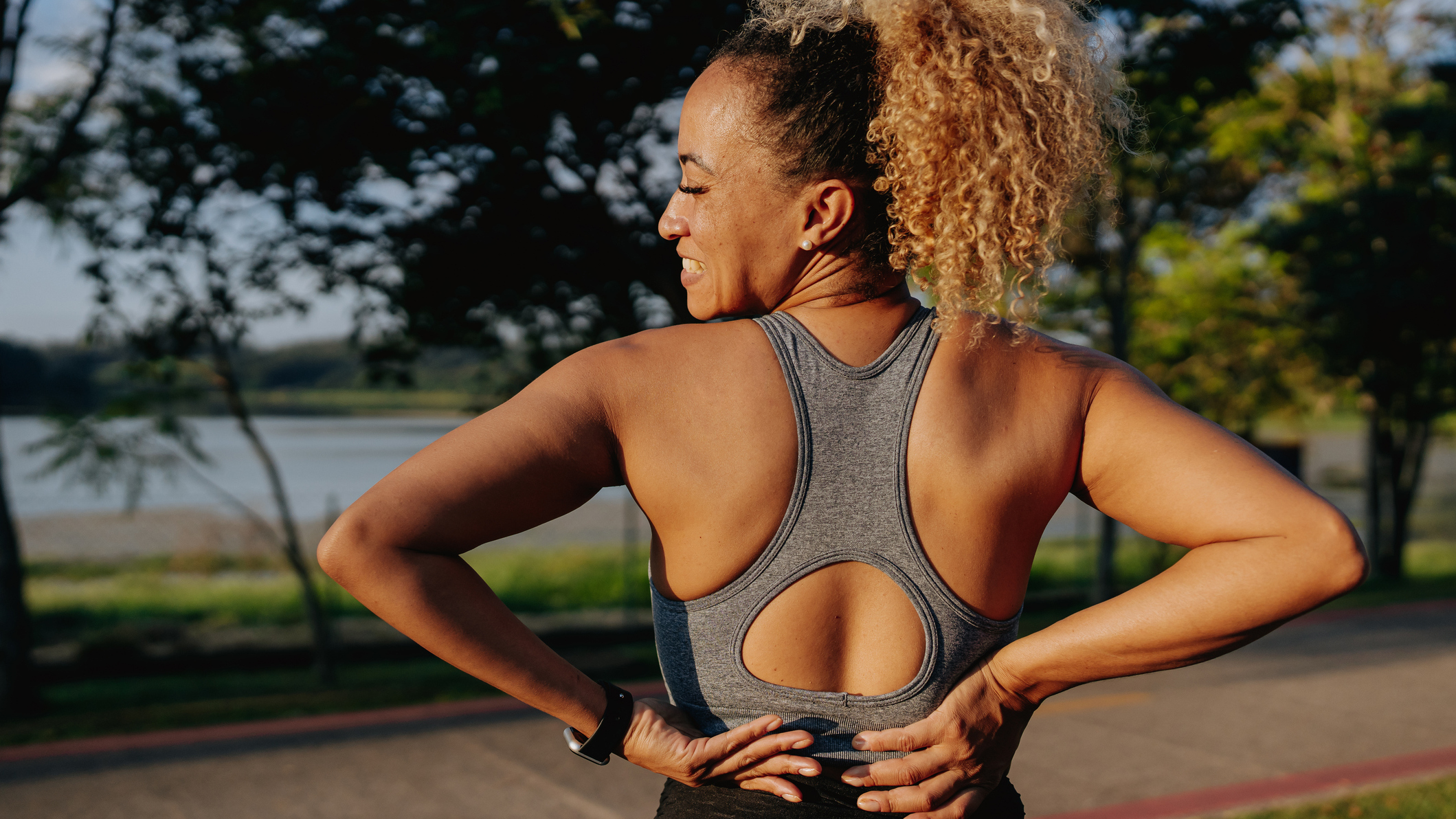
Most people could benefit from a stretch that releases the pressure built up in their lower back from hours spent hunched over a keyboard. So you can understand why I stopped scrolling when I saw a post from Gede Foster, director of fitness and performance at digital fitness platform FIIT, captioned: "Best stretch for a tight lower back".
"OK, so 'best stretch' is [100% an] exaggeration," Foster writes. "What is 'best' for one person isn’t ‘best’ for another." However, she continues, it "sorts me out when I'm feeling stiff in my lower back so give it a go and see if it helps".
The move is the Jefferson curl. You might have spotted this move on Instagram or TikTok before—it's been covered by The Prehab Guys and trainer Pavel Macek—stopping you in your scrolling tracks because the curled spine looks like a back injury waiting to happen.
If you already suffer from an existing lower-back issue that causes pain, you should first consult a certified practitioner to decide if this move is safe for you. But if you have a generally clean bill of health, bar for a bit of mild tightness in your back muscles, it's one to test out. And it certainly does the trick for Foster, so I caught up with her to find out more about the movement and why she posted it.
Causes of a tight lower back
"The most common cause for a tight lower back is sitting down a lot at your desk," says Foster. "It tightens the hamstrings and hip flexors, and pulls the pelvis into a forward tilt, which then puts more pressure on the lower back."
Lifting too heavy too often is a common cause too. "The reason I posted that video in the first place is because I was doing a lot of heavy squatting, not doing enough mobility, and getting a really tight lower back," says Foster.
Stiffness can also build up in your body if you neglect to introduce regular "flexion, extension and torso rotation" adds Foster. This can even impact people who exercise regularly, such as runners or cyclists, who only move their bodies through one plane of movement.
How to do the Jefferson curl
Foster says the Jefferson curl is "great to include at the end of a warm-up or at the end of a workout". Ready to put it into practice?
In the video, Foster is standing barefoot on the edge of a large box, holding one dumbbell in both hands. With legs remaining straight, she arches her body forwards, slowly lowering the weight past her toes until her body is almost completely folded over.
You don't have to be a former dancer and full-time fitness professional to execute a flawless Jefferson curl—but it helps. "This is NOT about how much weight you can use. You simply want a small external load to assist the stretch," she writes in the caption.
Here's Foster's detailed form guide.
- Get on a low box or step and stand on the edge. "It doesn't have to be as high as my box, that's just what I had to hand," says Foster. Push the box or step against a wall to ensure it remains stable throughout as you'll be standing on the edge and light boxes can tip over.
- Hold a light dumbbell in both hands. "A light kettlebell will work equally well," says Foster. "Just don't use anything super heavy."
- Let your arms hang so that it's just your grip that's holding the weight.
- Stand with your feet hip-distance apart, so your feet are just under your sit bones. If your hamstrings are especially tight, allow a micro bend in your knees to protect your posterior chain—the muscles that run down the back of your body.
- Drop your chin to chest and roll your spine down really slowly, one vertebra at a time, allowing the weight to gently pull you toward the floor. Creating as much articulation as you can is key to releasing the muscles either side of your spine.
- On the roll down you should feel a strong stretch down the erector spinae, and probably into the rhomboids if they're tight, the upper back and the traps.
- "The roll up is the best bit," says Foster. Think about slowly stacking one vertebra at a time, enjoying the release of your muscles as you go. Stand tall, take a breath. Then repeat the move.
- Perform three sets of 5-10 slow and controlled reps, resting a minute between each.







